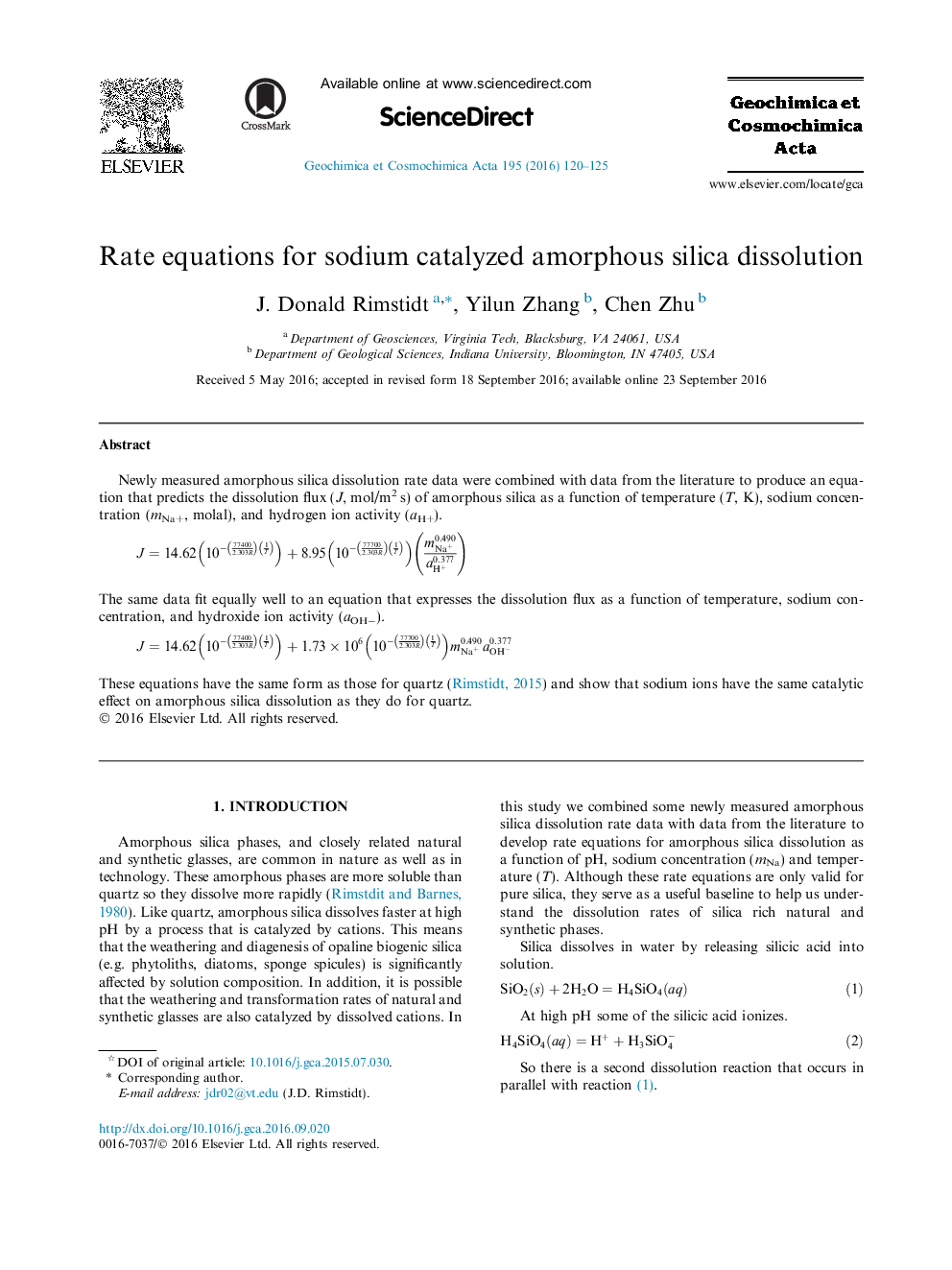| Article ID | Journal | Published Year | Pages | File Type |
|---|---|---|---|---|
| 6437064 | Geochimica et Cosmochimica Acta | 2016 | 6 Pages |
Newly measured amorphous silica dissolution rate data were combined with data from the literature to produce an equation that predicts the dissolution flux (J, mol/m2Â s) of amorphous silica as a function of temperature (T, K), sodium concentration (mNa+, molal), and hydrogen ion activity (aH+).J=14.6210-774002.303R1T+8.9510-777002.303R1TmNa+0.490aH+0.377The same data fit equally well to an equation that expresses the dissolution flux as a function of temperature, sodium concentration, and hydroxide ion activity (aOHâ).J=14.6210-774002.303R1T+1.73Ã10610-777002.303R1TmNa+0.490aOH-0.377These equations have the same form as those for quartz (Rimstidt, 2015) and show that sodium ions have the same catalytic effect on amorphous silica dissolution as they do for quartz.
